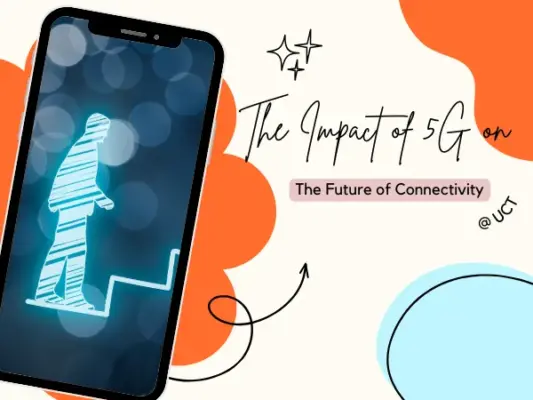
Introduction
The arrival of 5G technology represents a monumental leap forward in the world of connectivity. As the fifth generation of mobile networks, 5G promises to revolutionize how we connect, communicate, and interact with technology. With its potential to deliver faster speeds, lower latency, and enhanced capacity, 5G is set to transform various aspects of our digital lives and industries. This blog explores the profound impact of 5G on the future of connectivity, highlighting its key benefits, applications, and the changes it will bring.
What is 5G?
5G, or the fifth generation of mobile networks, is designed to improve upon its predecessors—4G, 3G, and 2G—by offering significantly higher data speeds, reduced latency, and increased network capacity. It operates on a combination of frequency bands, including low, mid, and high bands, which collectively enable a more robust and efficient network.
Key Benefits of 5G
1. Blazing Fast Speeds:
– Higher Data Rates: 5G can deliver download speeds up to 10 Gbps, which is up to 100 times faster than 4G. This speed enables seamless streaming of high-definition content and faster downloads and uploads.
– Enhanced User Experience: With higher speeds, users will experience smoother interactions with apps and services, reducing buffering times and improving overall satisfaction.
2. Ultra-Low Latency:
– Near-Instantaneous Response: 5G reduces latency to as low as 1 millisecond, compared to 30-50 milliseconds for 4G. This near-instantaneous response time is crucial for applications requiring real-time interaction, such as gaming and autonomous vehicles.
– Improved Communication: Low latency enables more reliable and instantaneous communication for critical applications, such as remote surgeries and industrial automation.
3. Increased Network Capacity:
– Support for More Devices: 5G can support up to 1 million devices per square kilometer, making it ideal for densely populated urban areas and smart cities.
– Enhanced Connectivity: The increased capacity allows for the growth of the Internet of Things (IoT), connecting a vast array of devices, sensors, and systems.
4. Enhanced Reliability:
– Stable Connections: 5G provides more stable and reliable connections, even in challenging environments, ensuring consistent performance for various applications.
– Network Slicing: 5G supports network slicing, which allows operators to create customized virtual networks tailored to specific use cases, ensuring optimal performance and reliability.
Applications of 5G
1. Smart Cities:
– Efficient Infrastructure Management: 5G enables real-time data collection and analysis, improving traffic management, public safety, and energy efficiency in smart cities.
– Enhanced Connectivity: IoT devices connected via 5G can optimize city services and infrastructure, providing a more responsive and efficient urban environment.
2. Healthcare:
– Telemedicine: 5G supports high-definition video consultations and remote monitoring, making telemedicine more effective and accessible.
– Remote Surgeries: The ultra-low latency of 5G allows for precise control of robotic surgical instruments from a distance, improving the feasibility of remote surgeries.
3. Automotive Industry:
– Autonomous Vehicles: 5G’s low latency and high reliability are critical for the development and deployment of autonomous vehicles, enabling real-time communication and decision-making.
– Vehicle-to-Everything (V2X) Communication: 5G facilitates communication between vehicles, infrastructure, and pedestrians, enhancing road safety and traffic management.
4. Entertainment and Media:
– Augmented and Virtual Reality: 5G enhances the quality and responsiveness of augmented reality (AR) and virtual reality (VR) experiences, enabling more immersive and interactive content.
– Streaming Services: The high speeds of 5G allow for uninterrupted streaming of 4K and 8K video content, providing a superior viewing experience.
Challenges and Considerations
1. Infrastructure Development:
– Deployment Costs: The rollout of 5G requires significant investment in infrastructure, including new base stations and antenna systems, which may pose financial and logistical challenges.
– Coverage Expansion: Ensuring widespread 5G coverage, especially in rural and underserved areas, is crucial for realizing the full potential of the technology.
2. Security and Privacy:
– Data Protection: With increased connectivity and data transfer, ensuring the security and privacy of user information is essential to prevent potential breaches and misuse.
– Network Vulnerabilities: The complexity of 5G networks may introduce new security vulnerabilities that need to be addressed through robust cybersecurity measures.
Conclusion
5G technology is poised to transform the future of connectivity, offering unprecedented speeds, low latency, and increased network capacity. Its impact will be felt across various sectors, from smart cities and healthcare to automotive and entertainment. While the benefits of 5G are immense, addressing challenges related to infrastructure, security, and coverage is crucial for maximizing its potential. As 5G continues to evolve and expand, it will undoubtedly reshape the way we connect, communicate, and interact with technology.